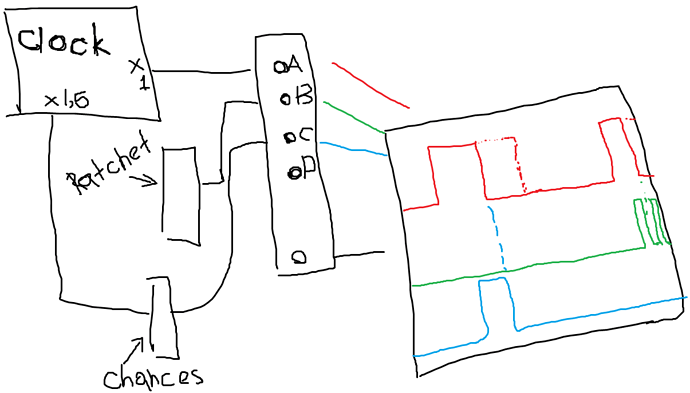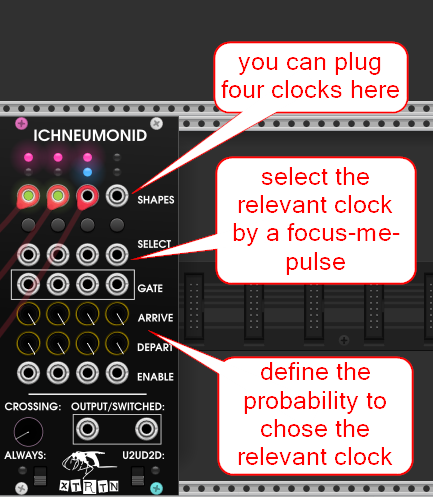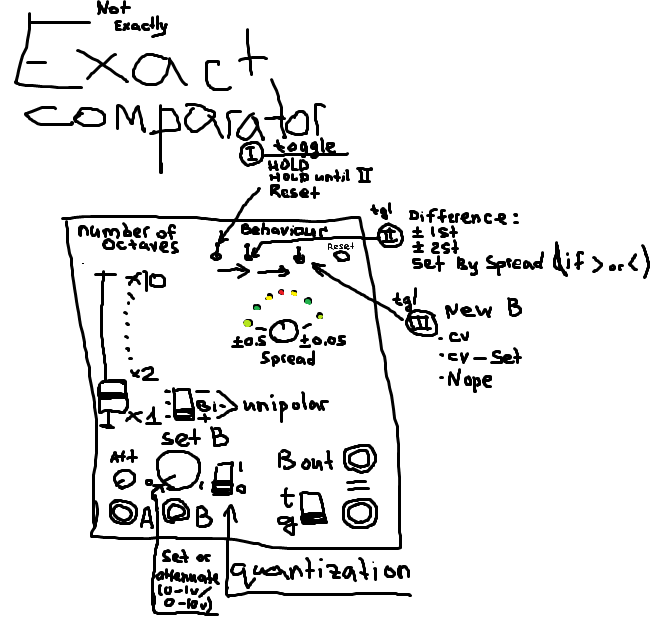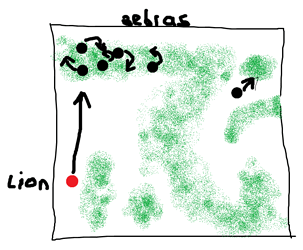So here I go again! I think my ideas are a bit daft, so it’s probably a waste of time, but I am having fun, so here’s something again that you can kinda make with existing modules (not 100% of functionality though), but it would be nice to have a compact solution
Imagine having a sequence that’s going like 11117113 and you want to accent the 7th. You can do it with a gate sequencer or maybe you can set a pulse on lfo that goes exactly at that moment. But let’s imagine the sequence changes and now it’s 11713371 or something like that. And you still want to accent the 7th. Well, you can set a comparator to check if the CV sent to your VCO has a certain value. But the first 7th in our sequence is in 3rd octave and the second is in 4th octave. And also you set a little drift so it would be kinda “organic” (i have a beef with this word). Well, you can still do it, but the number of modules would grow and grow until you have a patch that looks like a maze. Which is cool, but… Would be nice to have a module that does everything. Well, here’s my idea:
Basically it is a comparator with a little twist: it checks octaves too and searches for the more or less exact match. So now you can accent your 7ths all day long! Also you can set the number of octaves with a slider (so it wouldn’t accent something that is too high or too low). And you have a switch that goes with this slider, switch sets the polarity of a slider (plus, minus or bipolar). It’s kinda funny that if everything goes as I think it should go, at the highest slider position and B set to 0, if input A sends 5v or 10v, comparator should activate.
Some other features:
Spread sets the area that signal A should be compared to. So if it’s slightly detuned, you could turn the knob to the right and set the spread that counters the drift. If you want to accent the whole octave (for some reason), you can do it by turning the knob all the way to the left. I must add that there should be quantization circuit somewhere in this module for 1v/oct signals or there might be a problem when you set B slightly lower or higher: the spread wouldn’t be aligned perfectly, which is kinda the point of having the spread in the first place.
By the way, I think the signal B knob should be 0-1v, it would be easier to set and we don’t really need it to be -10 to 10v. We might need an octave selector for the situations where you need to accent the note from a certain octave, and it’s not the 4th octave. But for now let’s just ignore this problem! Nice.
The behaviour part is optional, but very fun, it has four elements:
-
toggle to set the behaviour when to expect the new B (if it is set by CV). It is a nice thing to have, because we could send the random voltage to the “B CV in” and this module would still be more or less tame. The toggle positions are: Hold (ignores the new voltage and operates with 0 or the first CV cignal that is not 0). Hold until (Holds B until something happens). Reset (new B on every reset).
-
This toggle sets the behaviour of Hold until position of a previous toggle. So it constantly checks the value of B and if new B is greater or less than a set number, it changes B. It would be nice to have a switch for that, but two toggles together look cool. Positions of this toggle: 1 semitone, 2 semotone and Set by Spread. Which is a short way to say “change everything you want if it’s not in a spread area”. Ideally it would be nice to have more musical positions here. Like if new B is a major third, change B. Or if it is a fifth. But for now let’s ignore this problem too! NICE.
-
the next toggle!~ It sets the source where to take the new B value from. Positions are: CV (takes it from CV), CV - Set (if the last B was set by CV, new B would be from a set position and vice versa, so it goes CV - set - CV - set - CV and so on), NOPE (No new B. Comparator shuts down and expects the Reset).
-
Reset input. Self-explanatory.
I think it should have two outputs: “B CV Out” and an actual comparator trigger/gate output. We could do without B CV out, of course, but it would be nice to have, just in case.
And that’s all for today. Take care!






